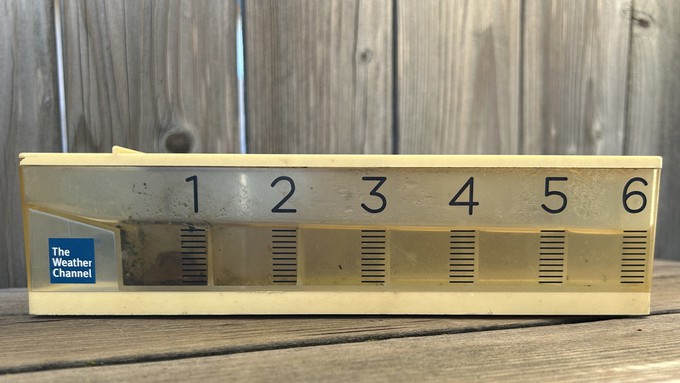
Holiday storms put averages back on track

Time to empty the rain gauge, before another storm arrives. The Sacramento area has received nearly 6 inches of rain -- and a little more than that in the northern part of the county -- since the Water Year started Oct. 1. Kathy Morrison
Happy New Year! We start this new month sunny, but more rain is coming soon.
And that’s a good thing.
Holiday storms boosted December’s rain total to 4.69 inches in Sacramento – 37% above average for the month.
We needed it. After a relatively dry autumn, our Water Year – which measures the rain we receive from Oct. 1 to Sept 30 – was tracking below normal.
Thanks to that Christmas week rain, our total since Oct. 1 is now 5.65 inches in Downtown Sacramento. Average for that same three months: 5.94 inches.
According to the National Weather Service, more moisture is coming very soon. A new storm system is expected to arrive Tuesday night and drop a half inch to one inch of rain by Wednesday afternoon. Those showers will be followed by more rain on Friday night and Saturday.
That could make for damp conditions for Sacramento’s annual McKinley Park Rose Garden prune-a-thon on Saturday, Jan. 6. Volunteers and city crews are expected to be out pruning Saturday morning, rain or shine.
Such in-and-out storm systems are normal for winter in Sacramento. January is typically among Sacramento’s rainiest months, averaging 3.64 inches.
This rain may seem like a lot, but it’s just a puddle compared to what we experienced this time last year. Sacramento recorded 2.12 inches of rain on New Year’s Eve 2022, topping off 7.79 inches for December 2022.
By comparison, 2024’s rain picture may be starting out just right – not too much, not too little, but enough to give trees a nice, deep soak.
For more updates on Sacramento weather: https://www.weather.gov/sto/.
Comments
0 comments have been posted.Sacramento Digs Gardening to your inbox.
Sites We Like
Garden Checklist for week of July 21
Your garden needs you!
* Keep your vegetable garden watered, mulched and weeded. Water before 8 a.m. to reduce the chance of fungal infection and to conserve moisture.
* Feed vegetable plants bone meal, rock phosphate or other fertilizers high in phosphate to stimulate more blooms and fruiting. (But wait until daily high temperatures drop out of the 100s.)
* Don’t let tomatoes wilt or dry out completely. Give tomatoes a deep watering two to three times a week.
* Harvest vegetables promptly to encourage plants to produce more. Squash especially tends to grow rapidly in hot weather. Keep an eye on zucchini.
* Pinch back chrysanthemums for bushy plants and more flowers in September.
* Remove spent flowers from roses, daylilies and other bloomers as they finish flowering.
* Pinch off blooms from basil so the plant will grow more leaves.
* Cut back lavender after flowering to promote a second bloom.
* It's not too late to add a splash of color. Plant petunias, snapdragons, zinnias and marigolds.
* From seed, plant corn, pumpkins, radishes, winter squash and sunflowers.